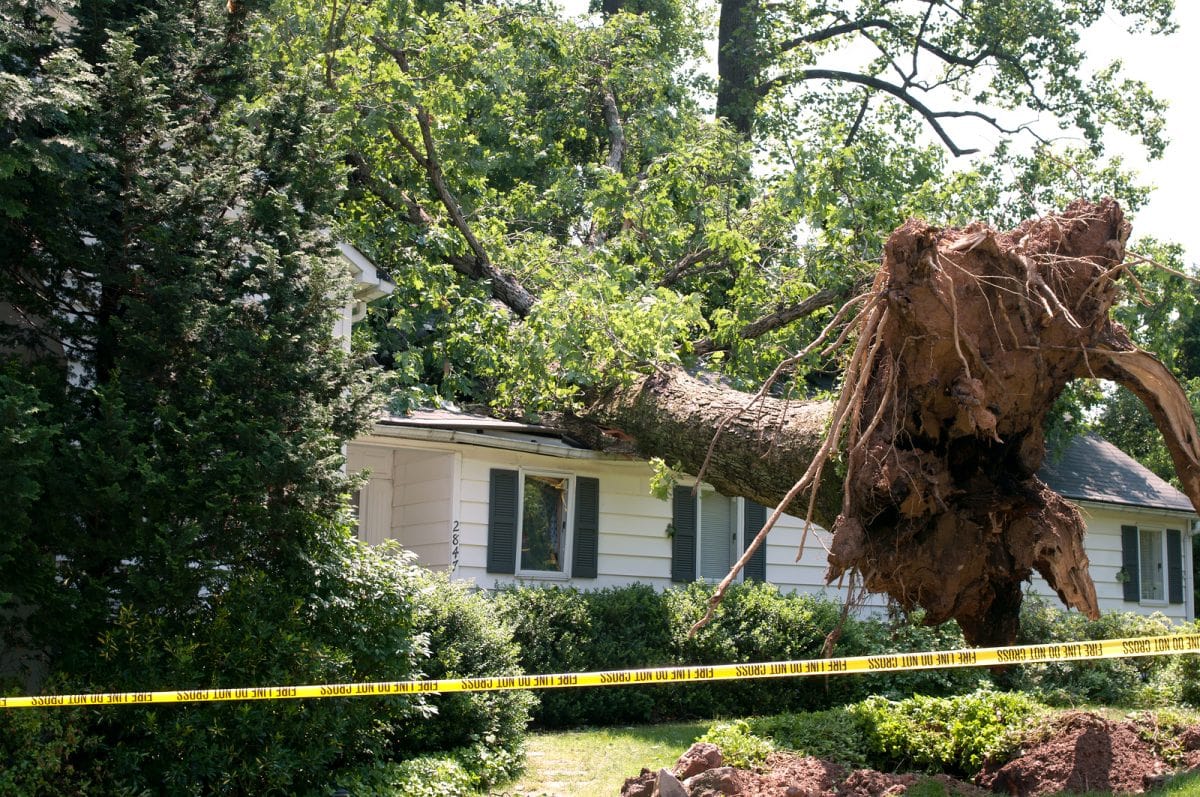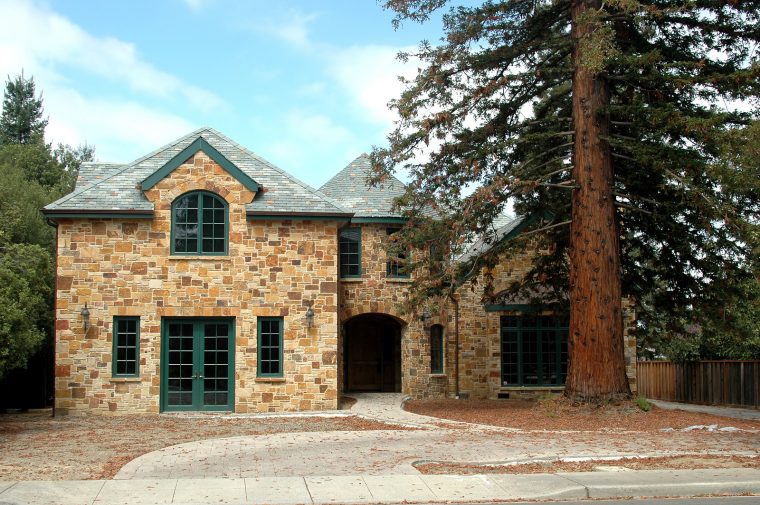Now, I’m not a landscaper or what could be called a master gardener but over many years of experience, I have learned some things. One of these is that people should be very careful what trees they plant in their yards.
In addition, people should be very careful about where they plant the trees they decide to plant.
Libby and I have seen many thousands of houses up close in our real estate career. And that includes many thousands of trees planted in the yards.
Here are some of the things we see over and over and over again.
We see trees way too big for the property itself or too big for the location where they were planted. Examples are trees that have grown large enough to push over fences. Trees that were planted within a few feet of the house that have grown to where they are damaging the roof gutters or even the roof itself or the house wall or windows. Trees that have root systems that come to the surface and ruin the lawn or that push up and wreck sidewalks, driveway, curbs, or even the foundation of the house itself!
We’ve seen lovely palm trees planted right next to the house that had grown to 30 feet or more in height and were doing great damage as the swaying trunk continually banged into the eaves.
We’ve seen gorgeous Coastal Redwood trees that people love because they are so gorgeous and because they grow fast, destroy the yard fence and encroach onto the neighbor’s property. We’ve seen their needles falling in such abundance that the ground is carpeted thickly. Where this carpet is nothing grows. The needles leach acid into the soil that the Redwoods love but just about nothing else can tolerate.
We’ve seen great big shady Willow trees with roots like giant squid tentacles reaching out and coming up in the grass. This is hard on lawn mower blades and ruins the lawn.
Or how about the pretty Mimosa tree with the beautiful pink blossoms? When those blossoms drop, they get into everything and are a real job to clean up. Then there are the little Mimosa trees that sprout up all over the backyard, the front yard, and the neighbor’s yard. It’s a constant struggle to stay ahead of them.
Finally, there was the great big tree that fell down in a storm. I don’t remember what kind of tree it was, just that it was really big. I do remember that it crashed right through the roof of the house and into the family room. Fortunately, nobody was in that room at the time and nobody was hurt.
Actually, all of the above have happened to Libby and me. Well, with the exception of the tree falling on the house. Although I did have a big tree fall on my car in a storm in Carmel many years ago. Thankfully I was not in it at the time. Squashed it flat!
Over the years we have moved into homes with these trees already there and as they grew the above-described situations required that we had them removed.
Now, these trees didn’t start out big. When they were purchased and planted, my guess is that the homeowner liked the look of the tree, had seen one or more pictures of the mature tree and liked that too. But somehow the eventual size of it or root behavior or other future obnoxious features got skipped over.

We have sadly, seen all of the above situations, (again, with the exception of the one falling through the roof), at houses where the trees in the front were planted by the landscape contractors before the buyer moved in. Now I don’t know if the choice of the trees was the contractor’s or the builder’s designer but these people should know better! Of course, the problems don’t become serious until many years later, so the contractor is off the hook.
The result always ends up a huge job to remove the trees and a huge cost on top of it. Taking down a very large tree in a difficult location, where the removal can actually cause more damage to the house, fence, etc., is a job for experienced professionals. The cost can run into thousands of dollars. Again, Libby and I know that from personal experience.
So, the point of all this is to share what we’ve learned about what can happen with the wrong tree in the yard. It’s also to share that we have learned to really check out all you can about the tree you are thinking of buying and planting. That goes for any plant, but trees can be the most expensive to deal with eventually.
Here is a link to just one of many resources on trees to avoid in your yard.
It is interesting that this and most other lists of trees to avoid don’t include the Coastal Redwood. I’m guessing that the author is appealing to a national audience and Redwoods are a pretty much a local deal in this part of California.
Here’s wishing you good fortune in all your future tree planting endeavors!







Thank you for this amazing article. I’ve been working on my landscape with privacy trees and this helps a lot.